
Marcela Caetano, known artistically as Ela Marte, is a talented Brazilian visual artist, illustrator, and muralist. With a background in Psychology, Marcela uses art as a way to translate emotions, stories, and the complexities of life, incorporating existential reflections into her work. Her creations stand out for their vibrant colors and striking shapes, exploring symbols, meanings, and references to Brazilian culture and the Portuguese language.
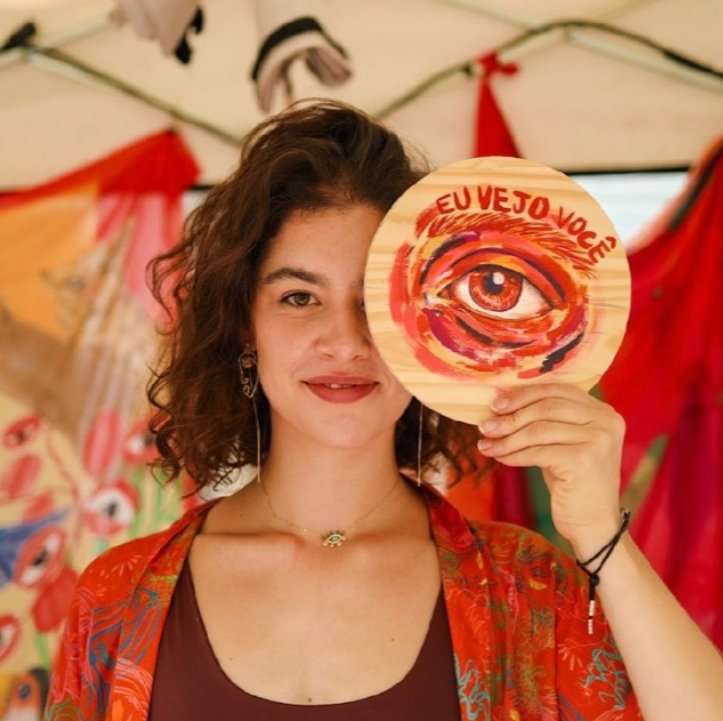
What makes an artist? For Marcela Caetano, the answer goes beyond technique. She believes that art is a profound process of self-discovery, a reflection of the connection between art and psychology, and, above all, an expression of creative freedom. Her work today, with vibrant and intuitive strokes, is a dive into the unconscious and Brazilian cultural identity, reflecting her personal and emotional journey.
Marcela graduated in psychology in 2022, but it was during college that she began to see art as something beyond a hobby. Interested in Jung’s analytical psychology and the concept of therapeutic mandalas, she realized the impact of drawing on self-knowledge and emotional expression. “Jung drew a mandala every day in his diary. He noticed that they expressed a lot of what he was feeling at that moment,” she says. This initial experimentation led her to explore drawing more, until, in 2019, encouraged by her mother, she painted the first wall at home. What started as a simple exercise turned into Ela Marte, her artistic project that now occupies her full time.
MashUp: How did the name Ela Marte come about?
Marcela Caetano: At first, the name I used was “Arte de Marcela,” but I felt like I needed something more engaging and unique. During a conversation with a friend, we started playing with words, and from that, “Ela Marte” came to life. This name is an anagram of my own name, Marcela, without the ‘c,’ and at the same time, it has a connection with “art.” The beauty lies in the different interpretations: many people read it as “she loves art,” which is an interesting interpretation, but there are also those who see a direct reference to the planet Mars. At the time, I was very involved with astrology, and Mars, as a symbol of energy and drive, made total sense to me. What is curious is that when I look at everything Ela Marte has become, I see that this process of choosing the name happened almost by chance. At first, I just wanted something that reflected my essence and my passion for art in a more authentic way. So, this wordplay ended up becoming the identity I carry today.
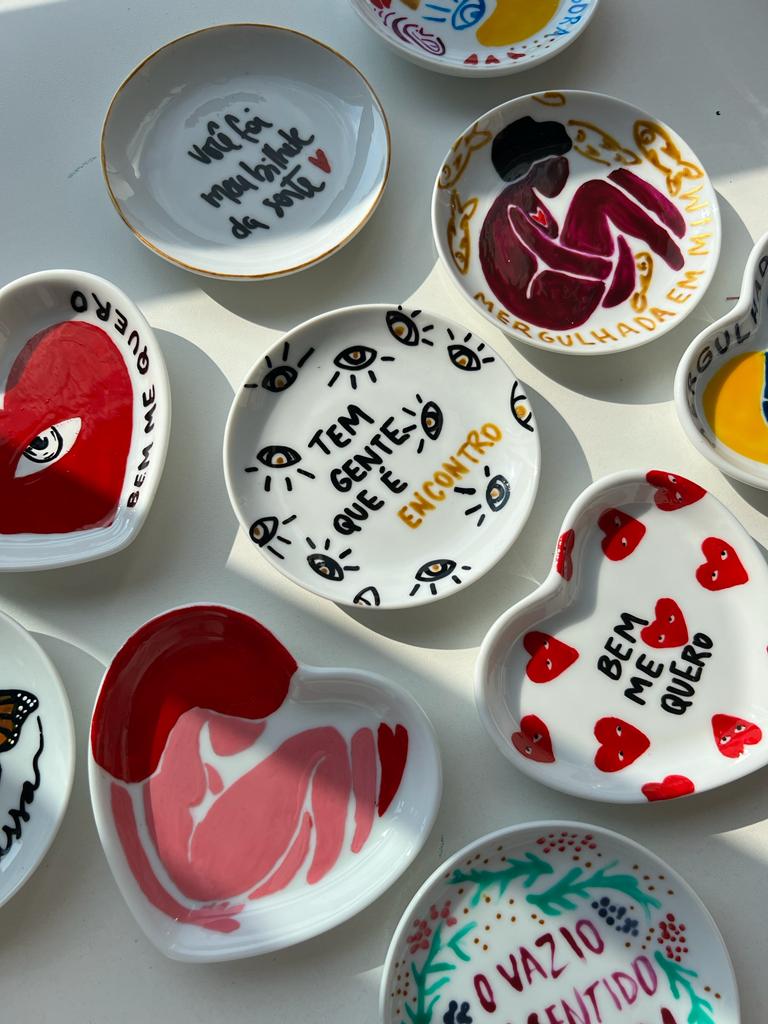
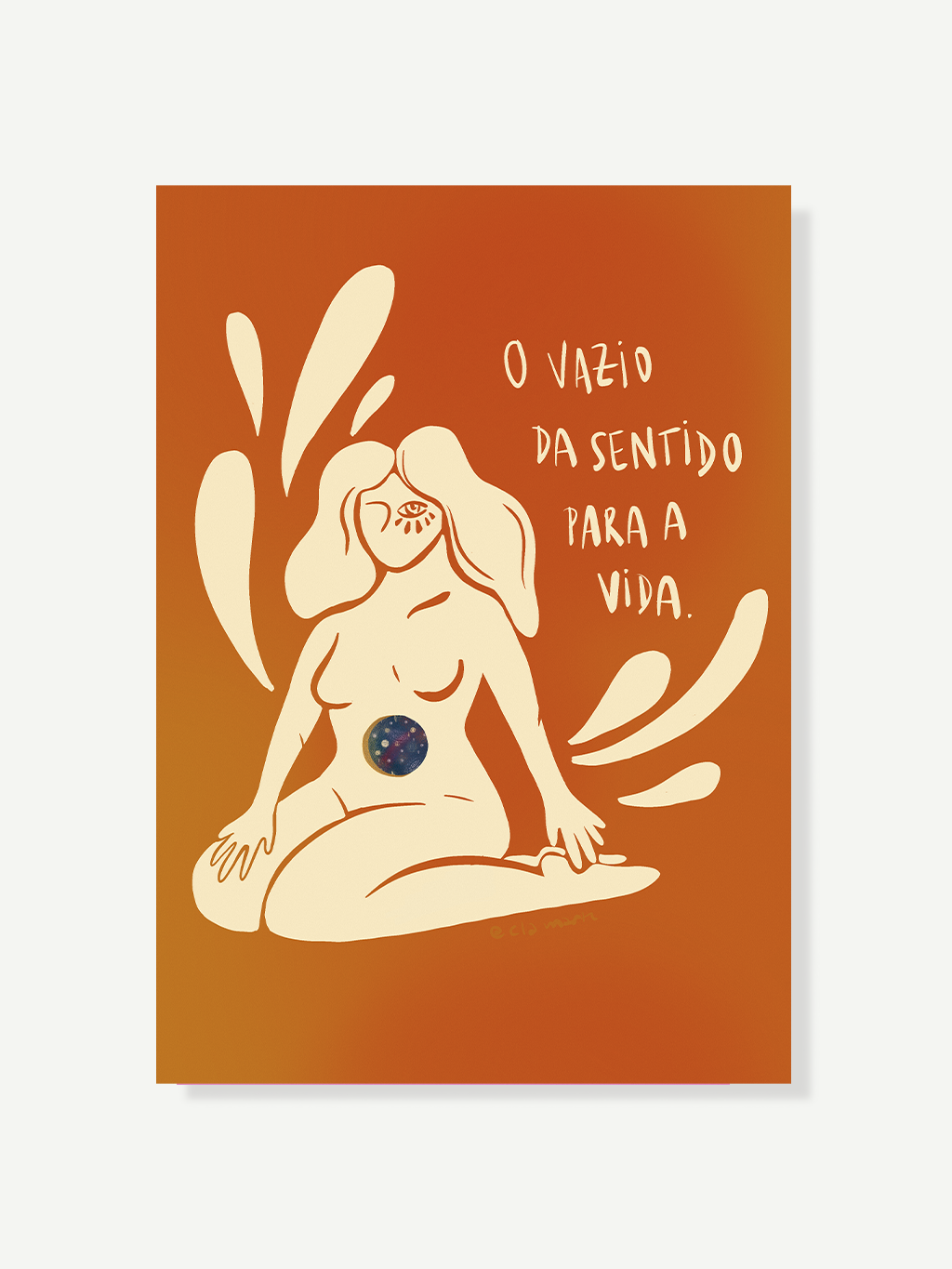
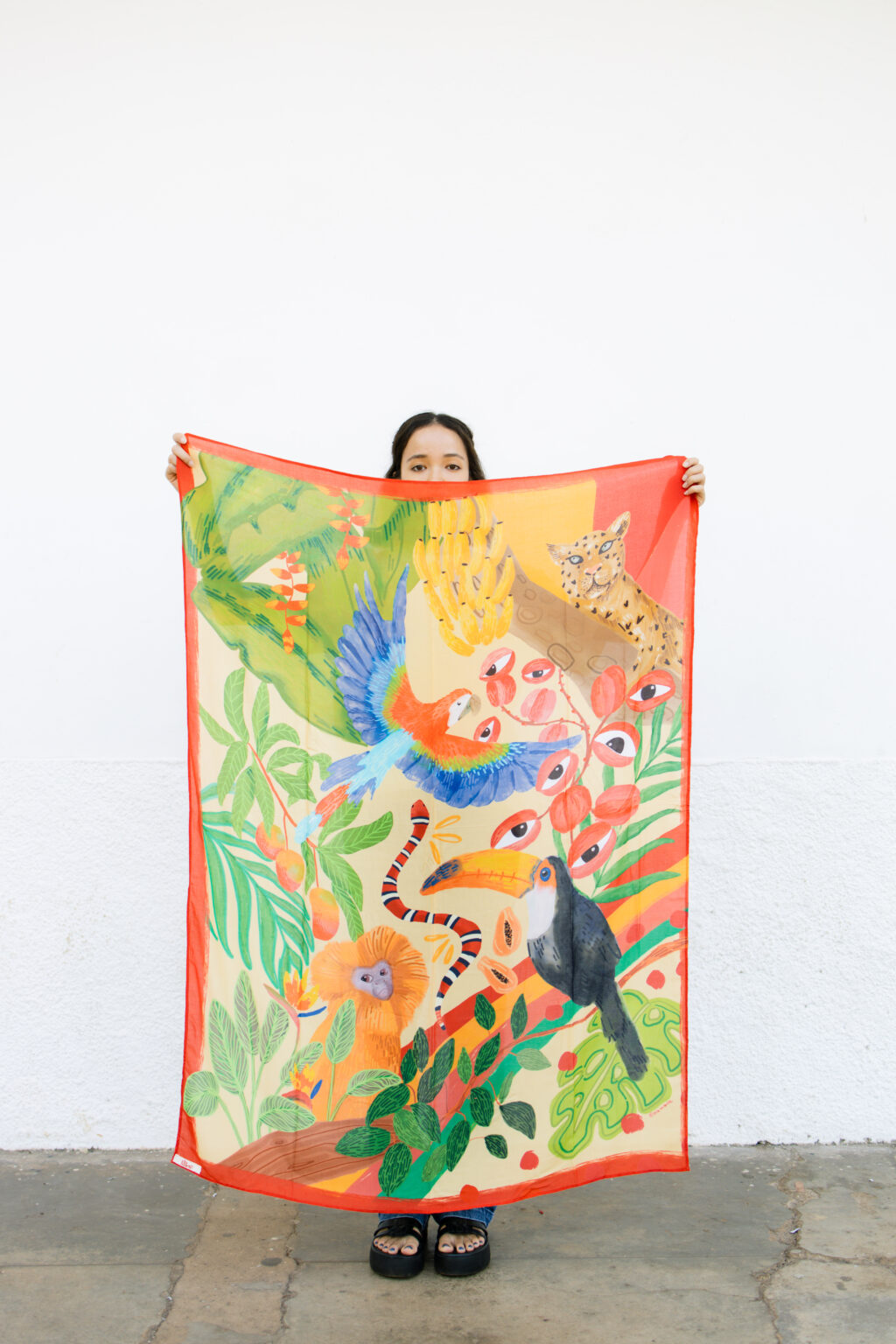
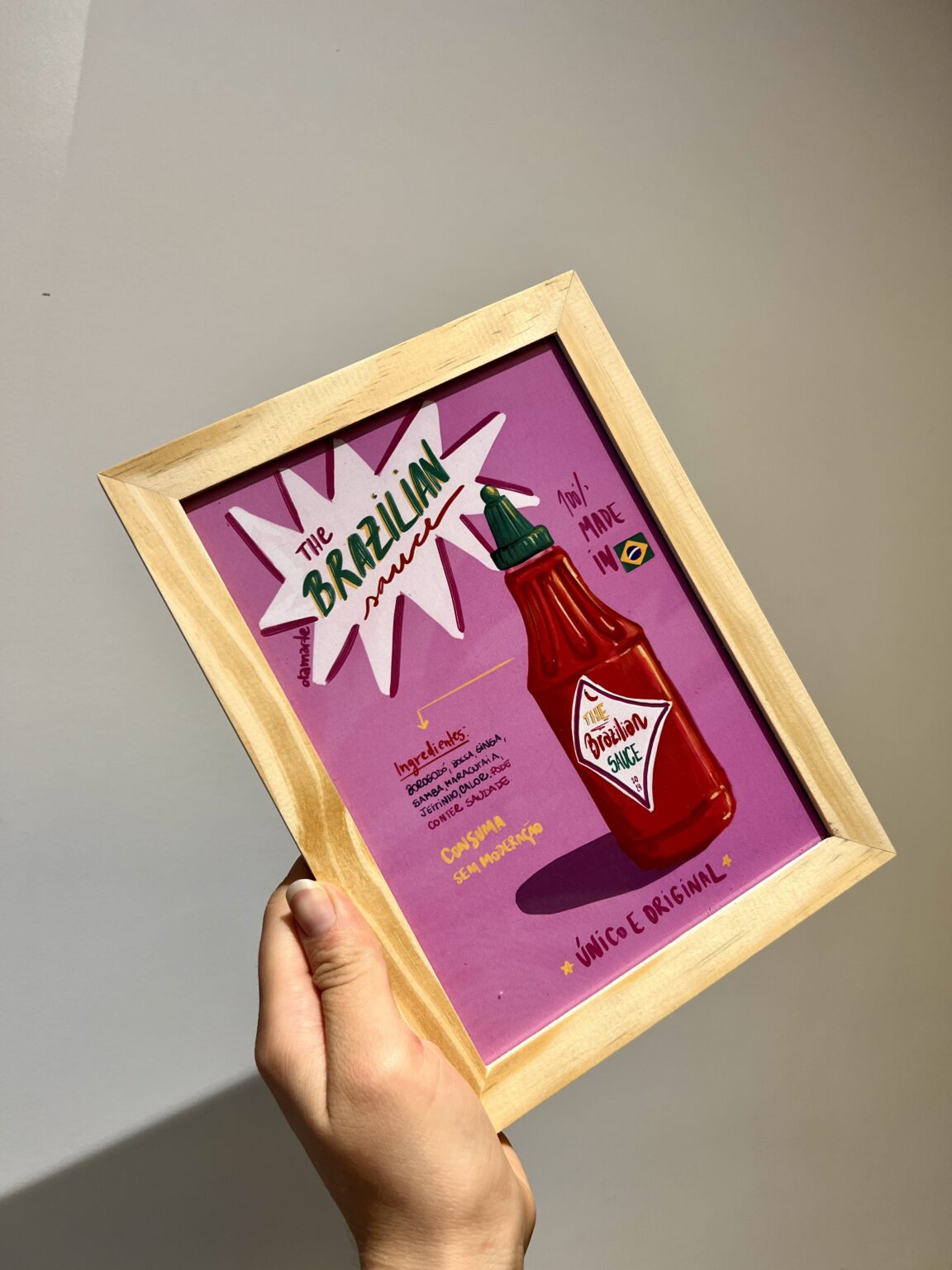
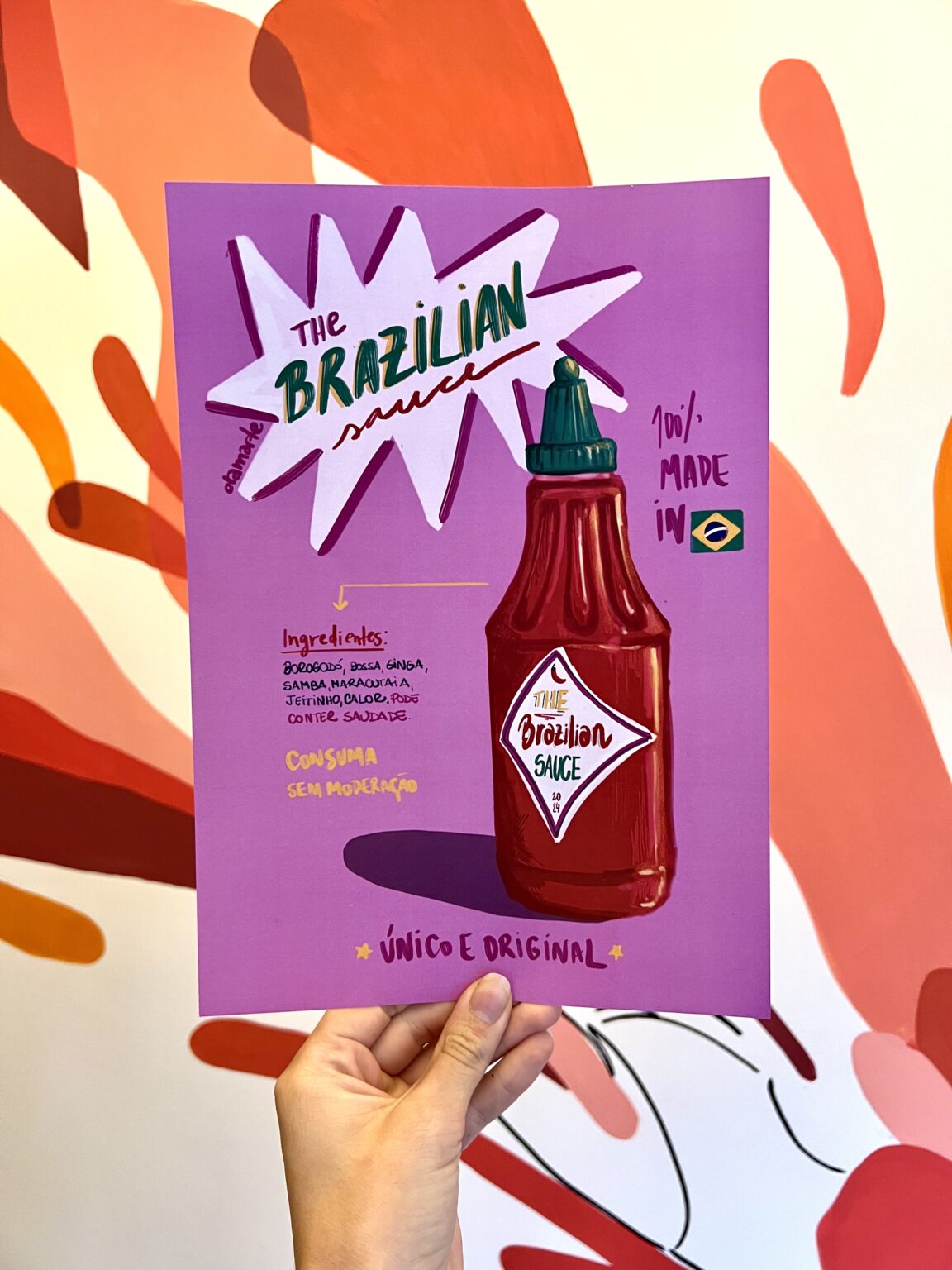
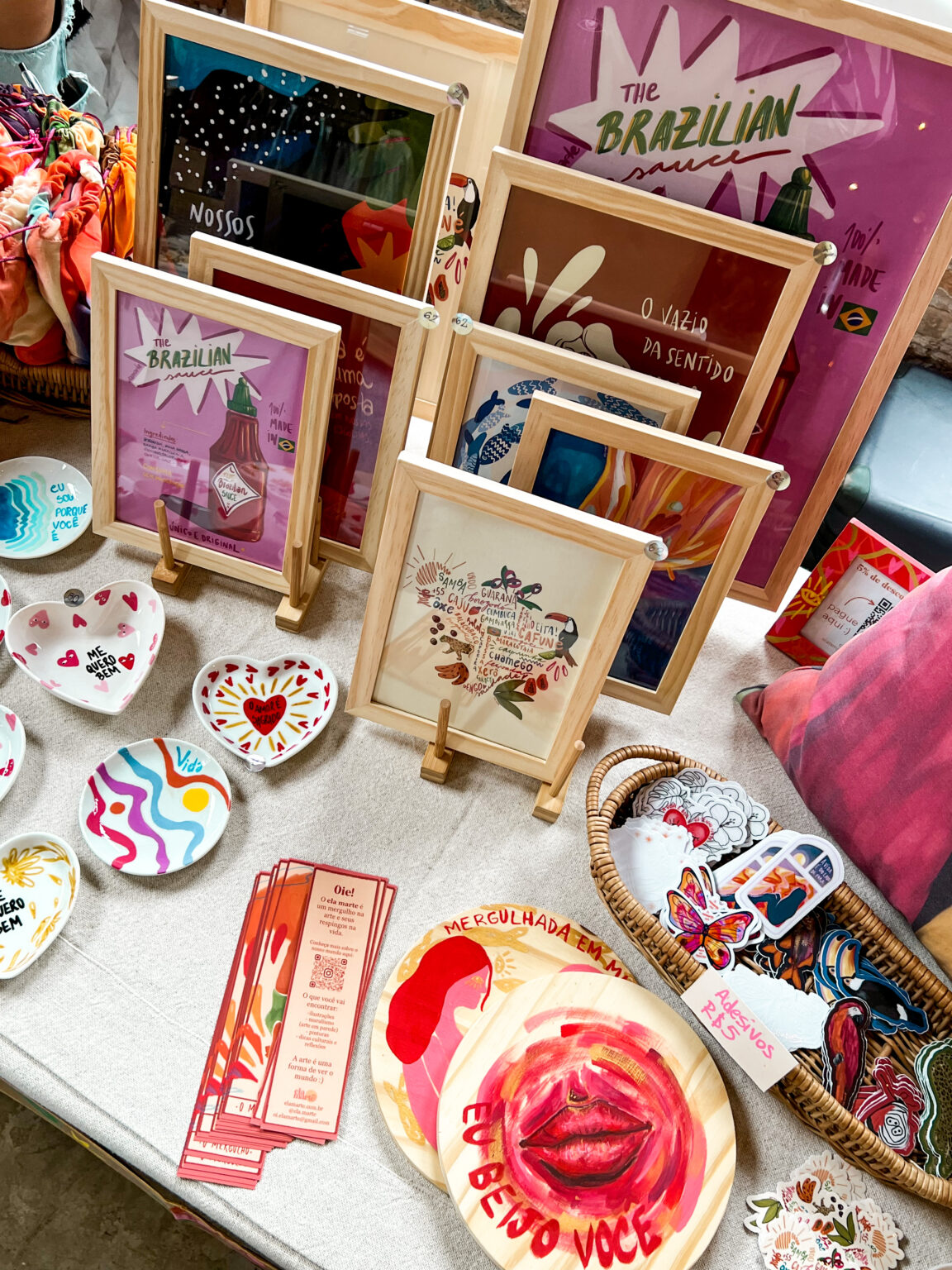
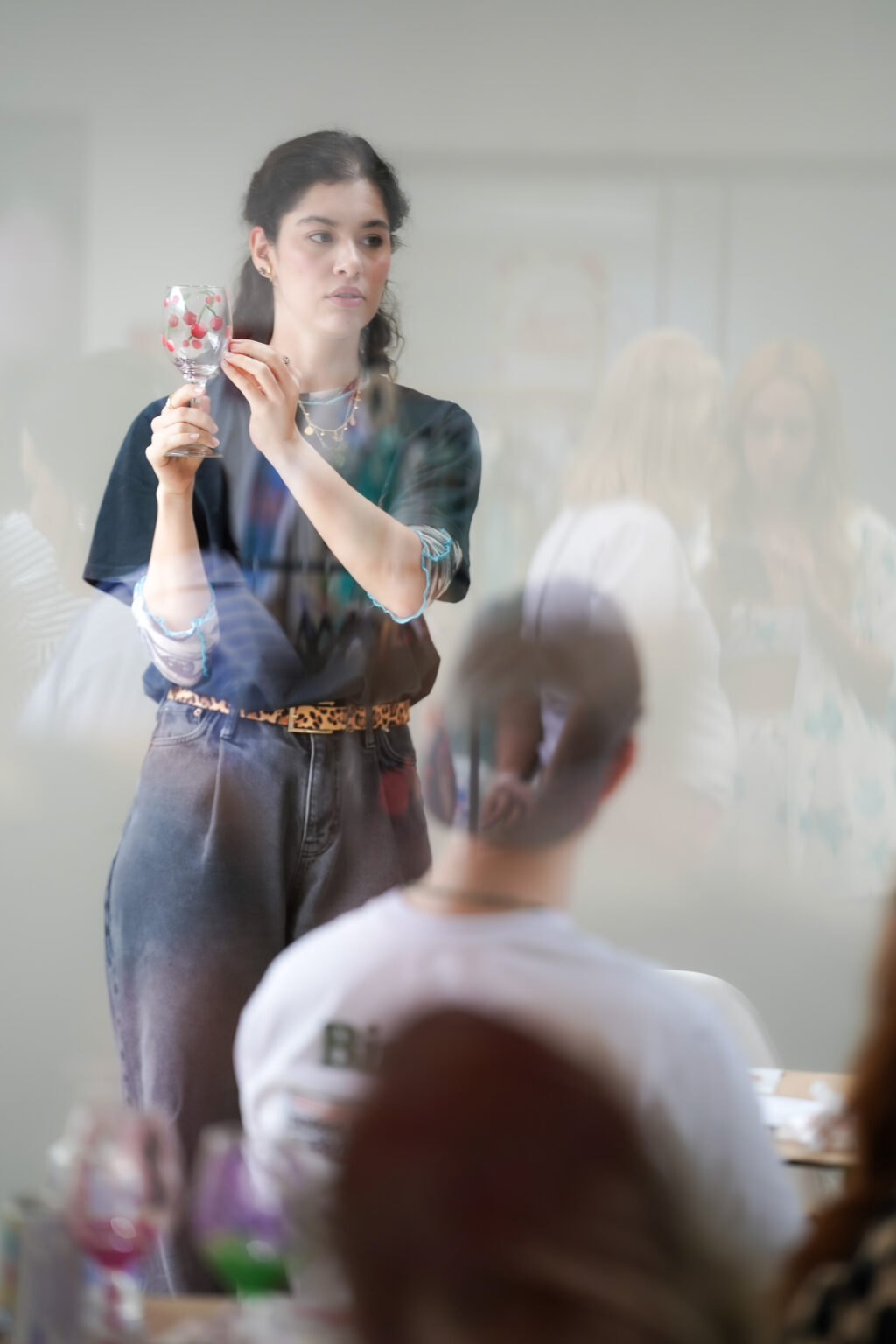
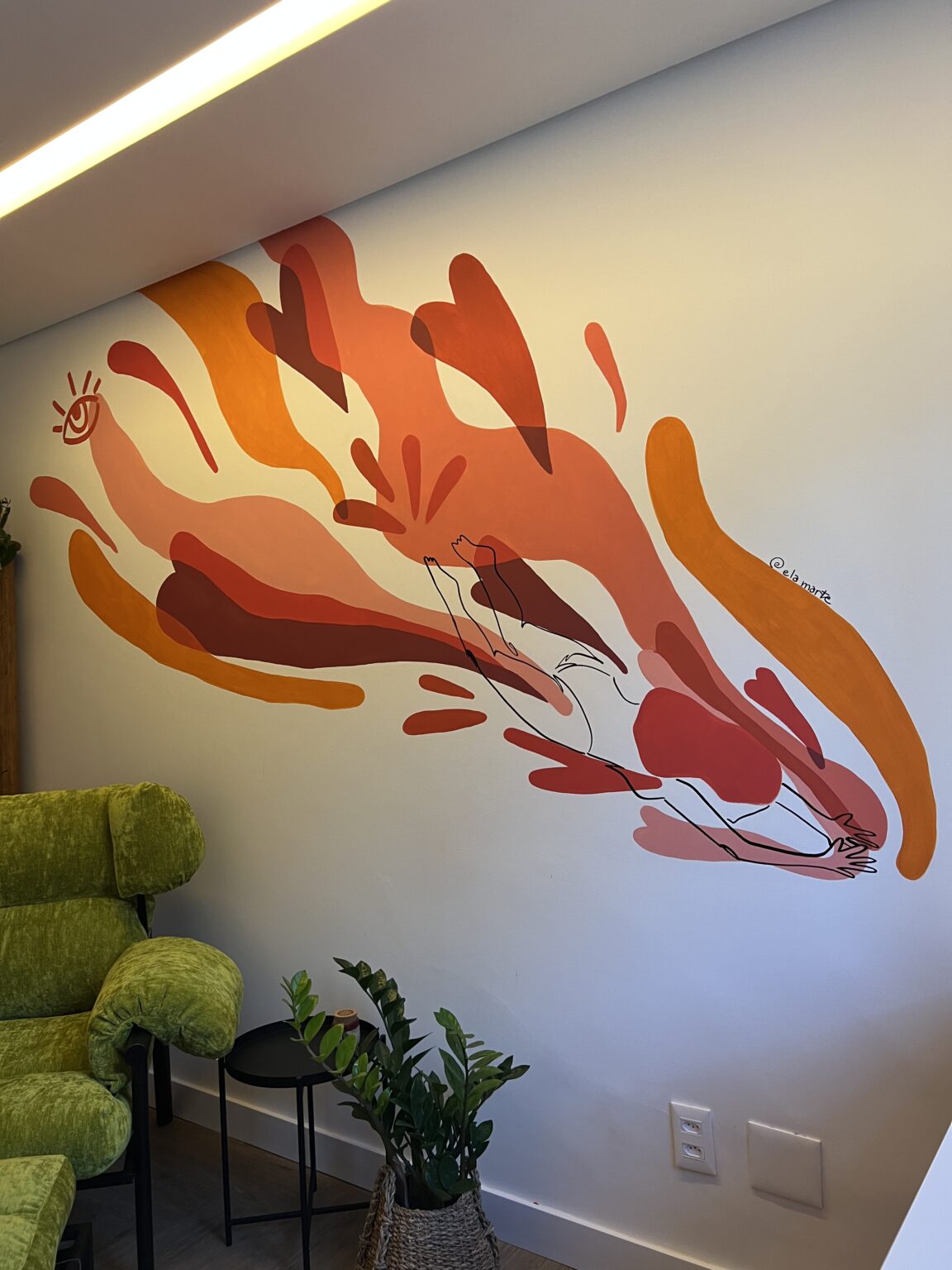

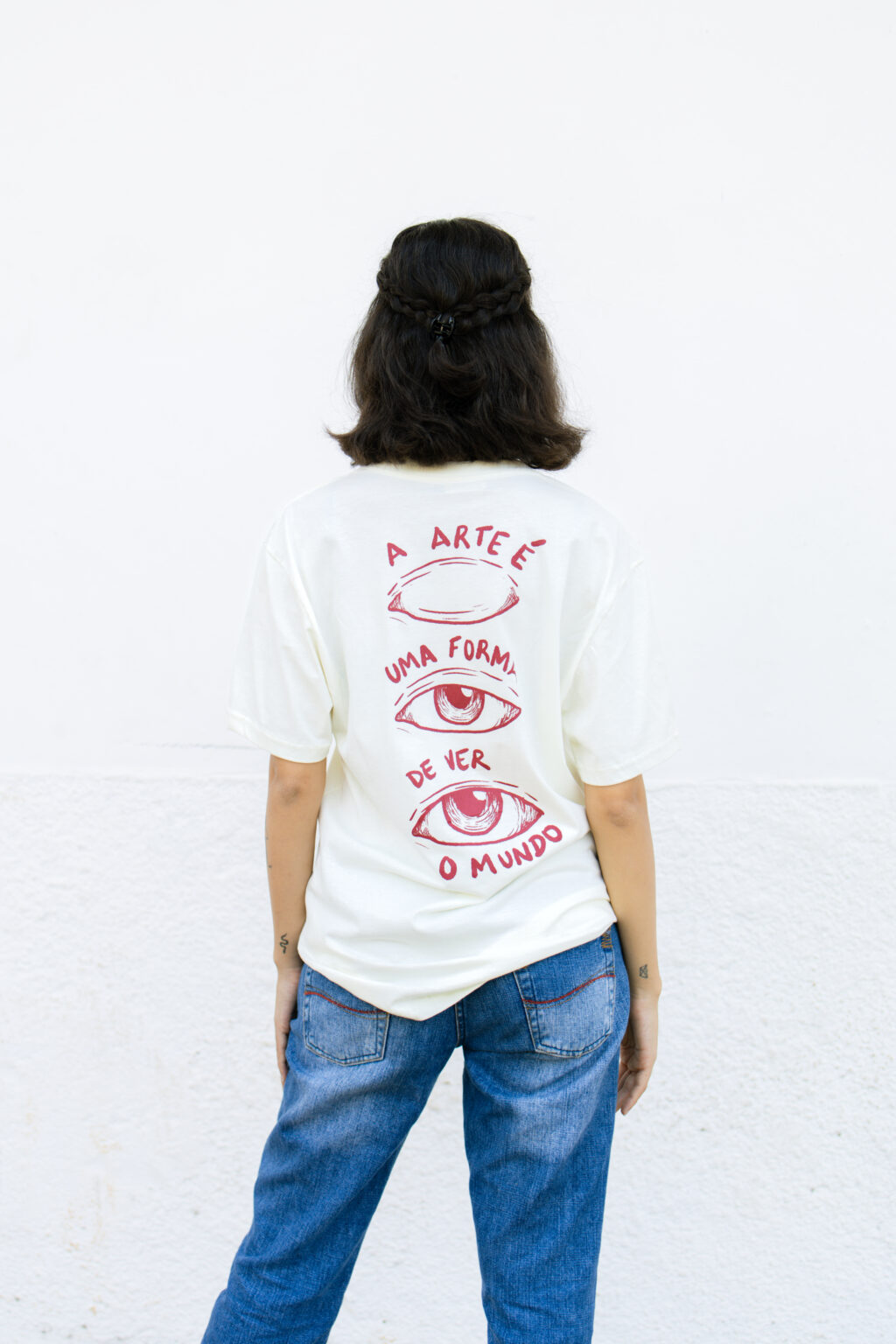
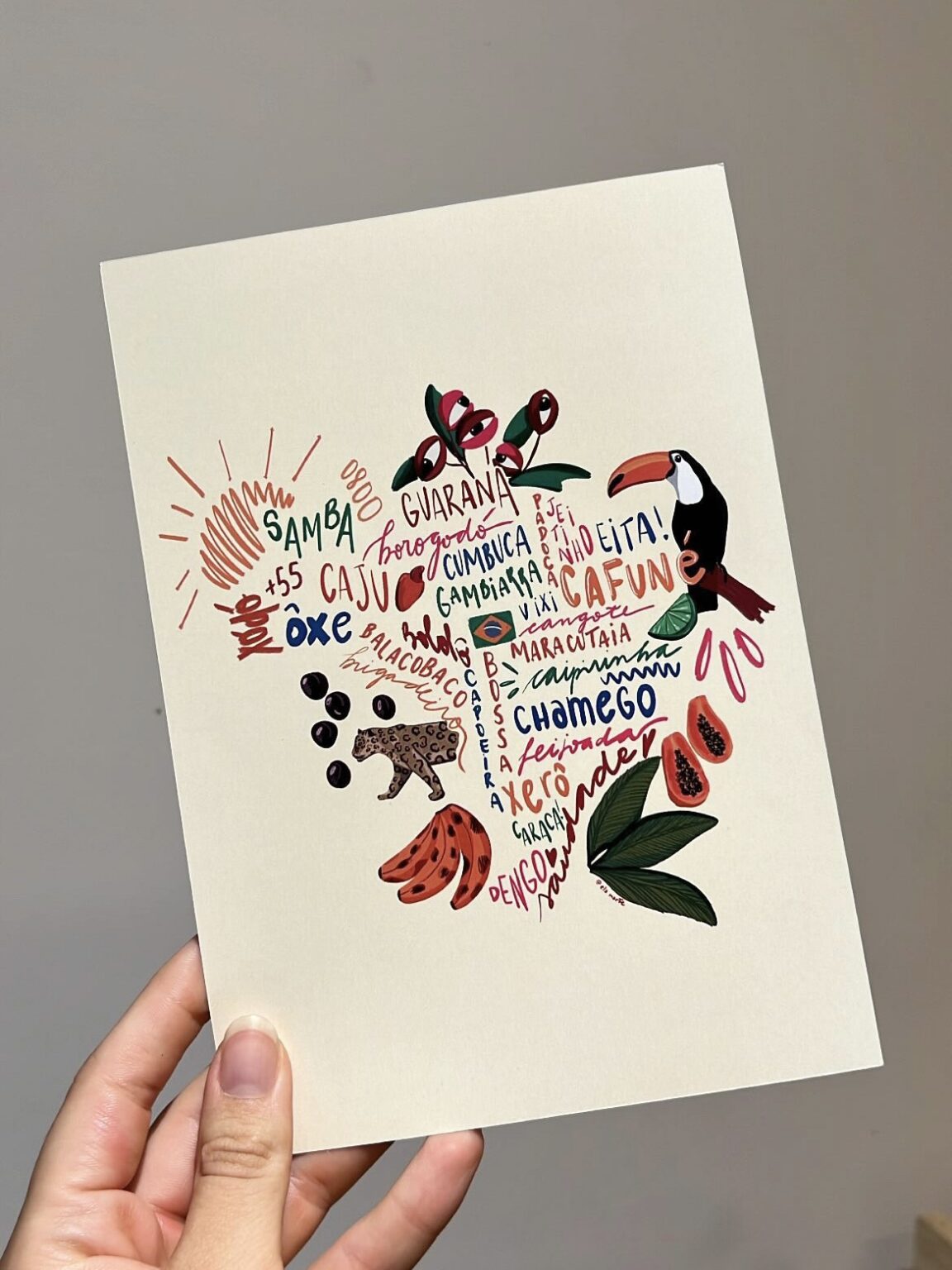
The influence of psychology in Marcela’s work manifests both in the forms and in the recurring symbols.
MashUp: Does your work carry deep meanings? Has that always been intentional?
Marcela Caetano: When I started, my focus was very much on how art impacts our lives, especially mental health. If you look at my Instagram from the beginning, you’ll see that I talked a lot about psychology, exploring how art can reflect on our well-being. I used to create posts with phrases linked to psychological concepts. One of my favorites is “emptiness gives meaning to life”, (o vazio da sentido para a vida), which comes from a concept in psychoanalysis. My journey started like this, with this connection between art and psychology.
In my work, the symbol of diving appears frequently, and this is related to Jung’s analytical psychology, which speaks about symbols as images that have meanings beyond their objective definitions. These symbols can carry universal meanings, which are common to a collective unconscious, but they can also have personal interpretations. This has always been very present in my creations. The first collection I launched on my website, called “Symbols,” had a lot of this idea of images filled with deep meanings, like the eye, which is a recurring symbol in my work.
But as I allowed myself to explore my art more freely and matured professionally, I began to distance myself a bit from this rigidity. I started creating not only with deep and philosophical meanings but also for the pure pleasure of creating, without the need to tie them to psychological theories. It was a process of liberation, of understanding that art can also exist for pure creation, without always having to carry a specific meaning.
MashUp: Did your relationship with Brazilian culture influence this process?
Marcela Caetano: I didn’t have such a strong connection to Brazil at the beginning. For example, I didn’t listen to much Brazilian music. But naturally, I began to identify more and started studying the culture, folklore, and regional symbols. This research culminated in the “Tropicália” series, a celebration of Brazilian fauna and flora, and in projects like the one with Moralist, where I explored the five regions of the country. Yes, and from that, I started developing other things, I liked that, and then I started creating more. It was also a process of identification, you know, with my own culture. Yes, studying a little more about Brazilian culture.
MashUp: Your use of colors is very vibrant. Has that always been natural for you?
Marcela Caetano: It’s funny because, at the beginning, I used to create a lot of black and white works, and I dressed that way a lot too. I thought I was a very neutral person, but I’m actually not. Over time, I realized that I am a very expansive person, and that reflected in my art. Nowadays, I’m much more colorful, both in my personality and in my work. The vibrant colors became a way to express that expansiveness and extroversion.
My artistic journey was also a process of self-discovery. In the beginning, I wanted my works to be clean and harmonious, with a certain control, almost like a need to keep things ‘clean.’ But that ended up restricting me. When I started allowing myself to use more colors, my art transformed, becoming more vibrant and free, reflecting more and more who I am.
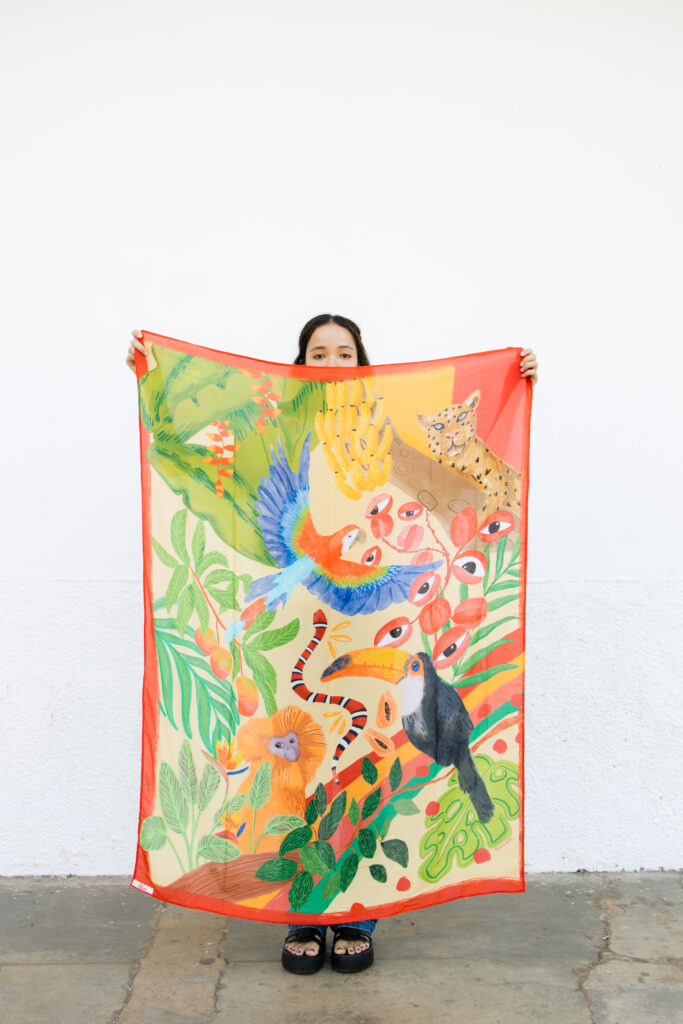
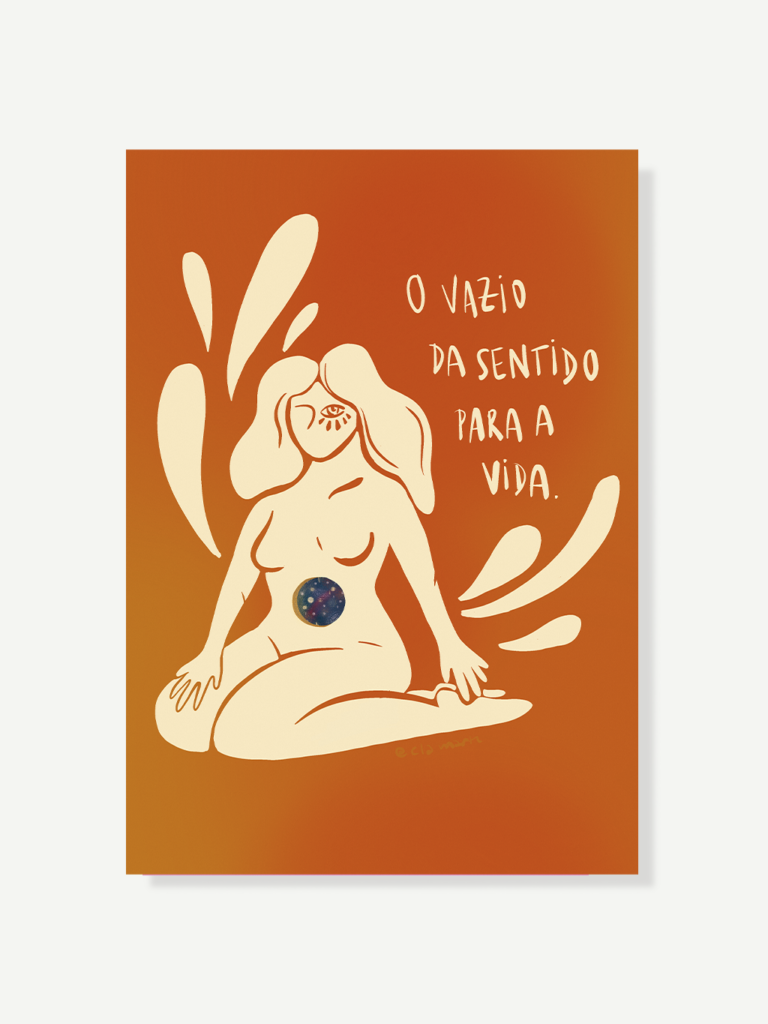
With the growth of Ela Marte, Marcela had to establish a separation between work and leisure. “When your hobby becomes work, it stops being a hobby. So, I decided that my professional production would be digital, while the analog would be reserved for more personal moments.” Still, she maintains her passion for physical work, painting walls, customizing objects, and conducting creative workshops.
The practicality of digital also influenced her creative process. “It’s much faster. In digital, I can test, erase, and redo as many times as I want, which is impossible in analog.” But this speed also has a downside. “You lose the time of the process, the patience to create something from scratch, without the option to undo with a single click.”
MashUp: I imagine that, with so many ideas, there must be a certain selection of what to follow through with or not. How do you decide when an idea isn’t the right time to execute or when it should be set aside?
Marcela Caetano: I have many ideas, but most of them end up not being executed. What works for me today is: if an idea comes up and I can put it into practice at that moment, I do it. To be honest, if I leave it for later, the chance of it not being realized is big. When I start working on something, I know that, at the beginning, it will probably look ugly or strange – it’s just a sketch, an attempt to see if it takes shape. Sometimes the sketch doesn’t evolve, and I end up giving up. I tend to be quicker to give up than to insist, because when I see it’s not working, I think: It’s not worth continuing. But some of the best things I’ve done were precisely the ones I insisted on. An example is a piece I made called “Brazilian Sauce.” The idea came out of nowhere, on a random night. I was thinking about Brazilian hot sauce, and the idea came to me to draw a chili pepper as if it were a bottle of sauce. The first sketch was terrible, all scribbled, but I decided to stick with it. I insisted, finished it that same night, and in the end, it turned out amazing. It’s one of my favorite pieces. But honestly, most ideas don’t follow this successful path.
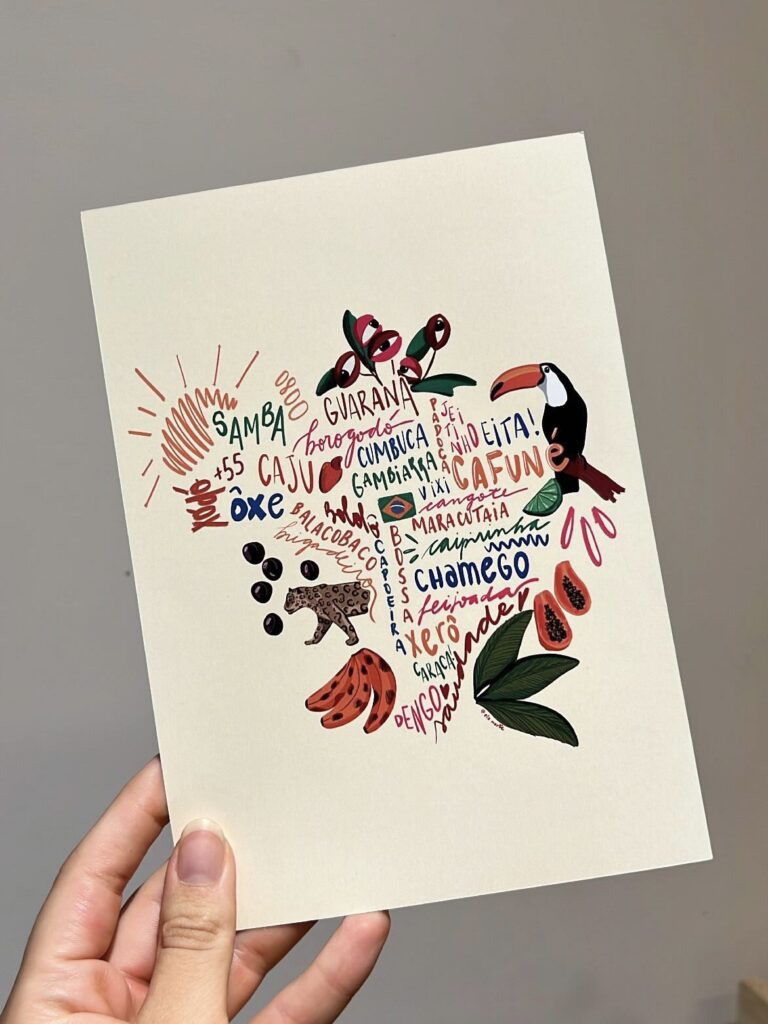
The connection with her work goes beyond Brazilian borders. Many people living abroad share: “I’m on vacation here and I’m going to take this home because I miss Brazil so much. It’s a way to have a little piece of the country with me.” It’s like a hug, an immediate connection, as if they were saying: “This person understands me, this resonates with me.” It’s in this space that her art also touches people, because, many times, she finds herself in situations where she sees something and thinks: “I’m not alone in this feeling. This isn’t something individual, it’s a shared experience.”
In addition to her personal work, Marcela sees art as a tool for reconnection. “Creativity is a muscle. If we don’t exercise it, it atrophies. When we’re kids, we draw, we fantasize, we create without fear. But as we grow older, that starts to fade.” Her desire is to encourage more people to reconnect with the act of creating, without the pressure of having to be necessarily good at it.
“We give up on hobbies because we think we need to be great at them. But you don’t. Creating is about allowing yourself to explore, make mistakes, experiment.”